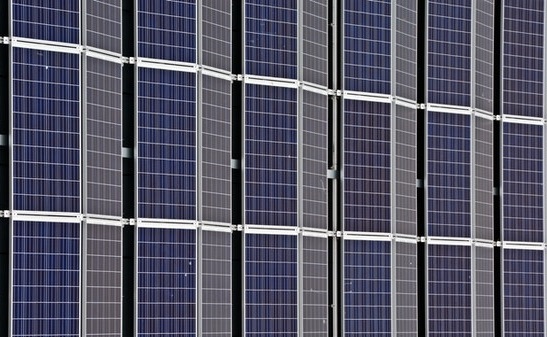Organic solar cells with their flexibility, improved conversion rates and increased efficiency have the potential to take sun to new places. It is possible to expect some success stories with the new cells that promise the same solar efficiency as silicon cells a decade ago.
Innovations in the solar space are also being driven by shrinking roofs, decreasing space and increasing energy consumption. Organic solar cells are one example. This is a new type of thin-film solar cells. Instead of being used as a backseat for Organic solar cells, plastic sheets are used and PV material printed on them with other bendable substrates. This is why they are exponentially lighter than silicon solar cell. The main drawback was the low efficiency. It has barely reached 10% over all those years. The combination of scale production and the flexibility of these organic solar cell offers new opportunities for deployment.
The flexible, thin and flexible silicon-based solar cell alternative that can be mass-produced is expected to enable renewable energy to be used in more applications like powering indoor smart devices. Organic solar cells can be made in many colors, which makes them more compatible with interior furniture. They are free from lead and other harmful chemicals.
Although the traditional solar cell is made from silicon, it doesn’t work indoors. However, these organic cells are still efficient indoors and can generate electricity at a high rate.
The US-based Research Institute, Georgia Institute of Technology did a different kind of research in 2010 on improving the performance of optoelectronics devices. Research showed that optoelectronics devices could be improved by using piezoelectric materials (which worked just like PV cells).
The solar PV cells convert interior light into electricity by using compact fluorescent lights and LEDs.
This device is thin and paper thin, measuring only 10mm in length. It was created by layering thin ZnMgO layers. These films are flexible because they contain a lot of ZnMgo and selenium (Se). This film can absorb indoor ambient light, which is the main advantage. These devices are thin and flexible and require less space. They can also be used in a variety of forms.
Mass Production Is Finally In Sight
Heliatek, a German startup, plans to start mass production of organic solar PV cells in scale as soon as next year. Ricoh, a Japanese company, plans to start producing these cells on a smaller scale in fiscal 2023. According to industry experts, each square meter organic cell weighs less that 2 kilograms. This will drop to less than 1 kilogram next year.
Epishine in Sweden, a leader in organic solar PV cells and a pioneer in the field, is expected to launch its modules on December. The modules have a conversion efficiency (13%) and a lifespan of approximately 10 years. According to the startup, the modules can be used as temperature and humidity controllers, card readers and fire alarms.
Japanese electronics company expects to produce 100 square meters organic solar cells within the next financial year. This will power approximately 50,000 small smart gadgets.
Dracula Technologies, a French company, is developing film-like organic cells that don’t rely on rare-earth-metals. Mass production is expected to start by 2024. Dracula Technologies received funding from individual investors for 2.4 million euros in startup capital in 2020. The cells can be stored for up to ten year and can convert at a rate of 13% outside.
This solar industry breakthrough is set to revolutionize the era. Consumers now have many options for solar power, and not just standard panels. The global market for organic cells will grow fivefold between 2021 and 2035 to over $500 million. Companies have great hope because organic solar cells offer a lot more potential for development.
